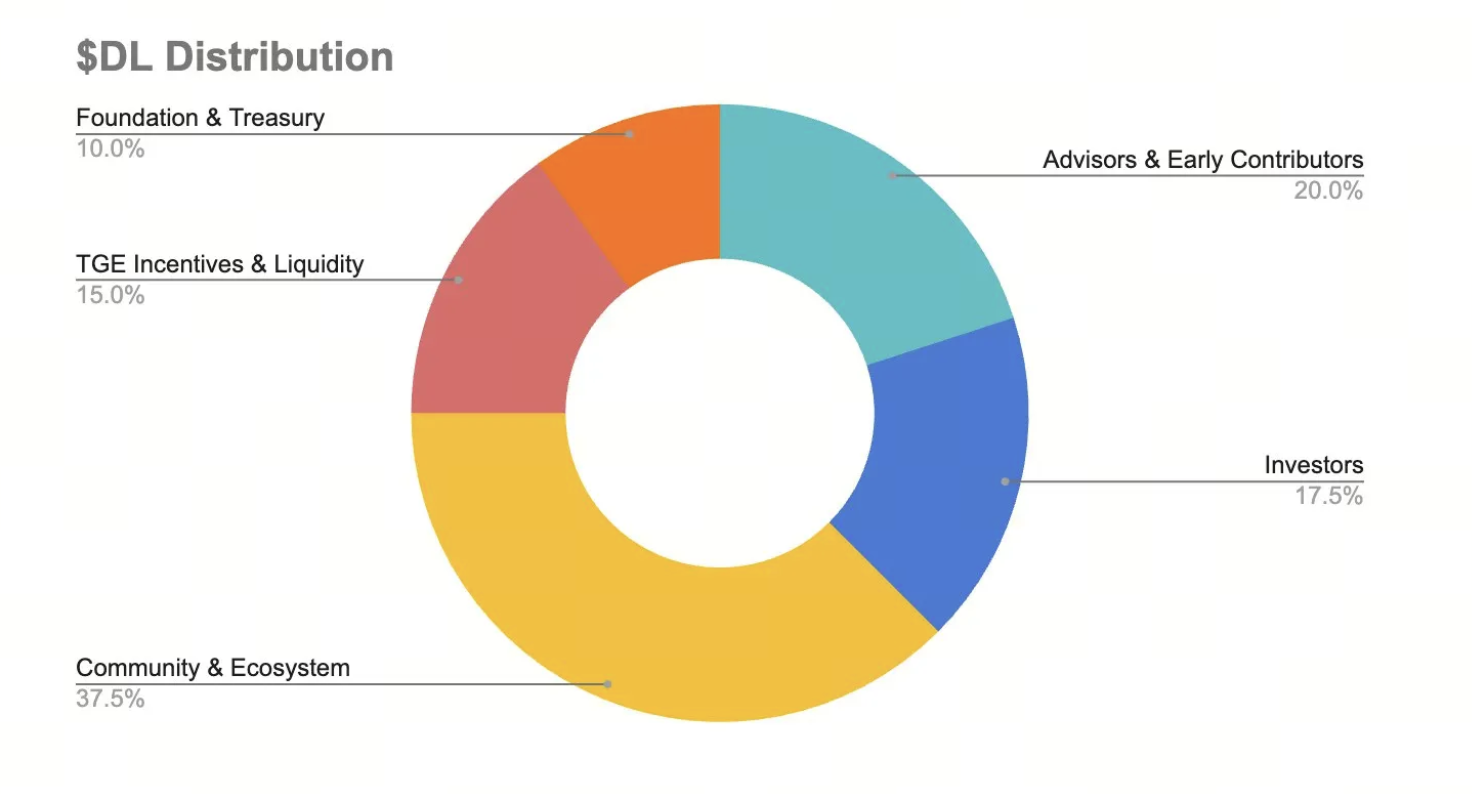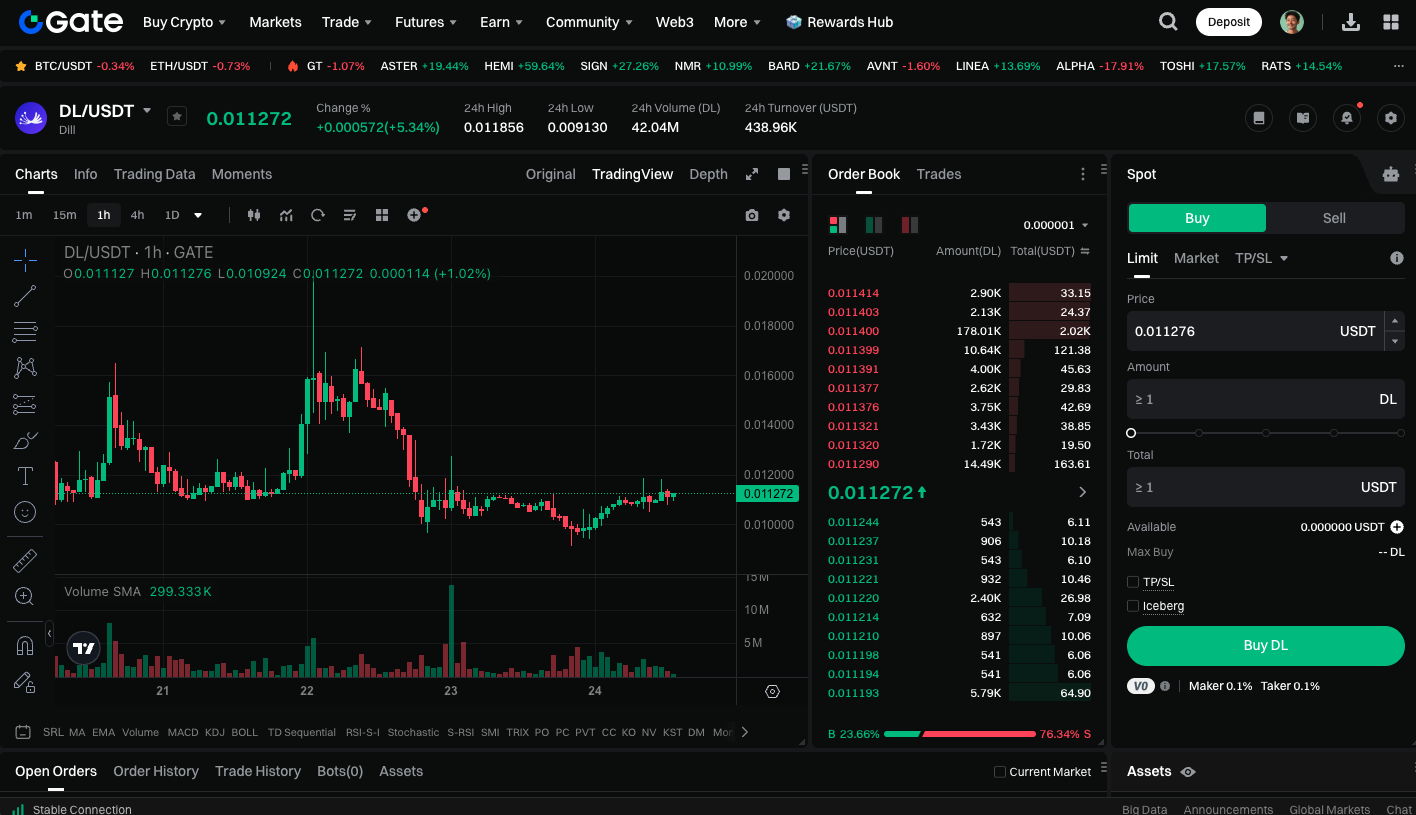What is Dill (DL)?
What is Dill?

(Source: dillxyz)
Dill is a next-generation Layer 1 blockchain, purpose-built with advanced modular and sharding technologies to deliver robust, scalable infrastructure for decentralized applications. Dill follows a forward-looking design philosophy aligned with Ethereum’s anticipated five-year roadmap. Dill prioritizes extreme scalability and maintains strong standards for security and decentralization. Its modular architecture separates the execution and data layers, ensuring each operates at peak performance and efficiency.
The network’s primary goal is to support blockchain applications for hundreds of millions of users and lay the foundation for mass adoption. Dill introduces a dual-layer staking mechanism that redefines how validators contribute to network security. Dill leverages both modular architecture and minipool technology to lower staking barriers, encourage validator diversity, and maintain cryptographic security. With capacity for up to 1,000,000 validators, Dill’s democratized staking model enables decentralization to scale as the network grows.
Core Technology and Scalability Architecture
Dill’s technological edge stems from its implementation of advanced data availability techniques and extension of Ethereum’s Danksharding roadmap. Dill provides fast, secure, and highly scalable data services. Other blockchains can leverage Dill as foundational infrastructure for widespread blockchain adoption.
Danksharding and Sharding Design
Dill’s Danksharding combines subnet sharding, two-dimensional Erasure Coding (2D EC), and KZG commitments to achieve industry-leading scalability:
2D EC Encoding: Dill fully aligns with Full Danksharding protocol standards
128 Subnet Architecture: Dill uses a distributed topology for optimal performance
Supports 1,024 Blobs: Dill enables large-scale data processing
10 MB/s Throughput: Dill provides high-speed data processing capacity
With its sharding design, each validator node synchronizes only a segment of Blob data, dramatically reducing network load and boosting throughput. Dill ensures efficient network operations even under heavy demand.
Modular Architecture
Dill’s architecture is structured into three principal layers: Consensus Layer, Data Availability Layer, and Execution Layer.
Consensus Layer
Transaction Sorting and Block Production: Dill organizes transactions and Blob data, and creates blocks with 2D EC
Cryptographic Commitments: Dill uses KZG polynomial commitments to validate data integrity
Subnet Distribution: Dill broadcasts sharded blocks to various subnets for heightened efficiency and security
Data Availability Layer
Column Sampling: Validators sample data columns to verify integrity
Distributed Validation: Multiple validators sign off voting outcomes to confirm data validity
Light Client Support: Dill enables users to verify the acceptance of specific block columns
Scalable Validation: Dill assures security without full data downloads
Execution Layer
Rollup-Integrated Execution Environment: Dill optimizes performance for smart contracts and dApps
Sovereign, Scalable dApps: Dill provides dedicated environments to facilitate rapid transactions with over 10,000-fold workload compression
Transaction Settlement: Dill finalizes all network transactions
Application Support: Dill serves gaming, decentralized apps, and enterprise-grade solutions
EVM Compatibility: Ethereum developers can onboard seamlessly with Dill
Subnets and Sharding
Dill divides Blob data into columns synchronized across multiple subnets. Proposer nodes package and broadcast blocks, validator nodes verify data availability via KZG commitments, and full nodes support data propagation while providing DAS services to light clients. Dill separates propagation and computational tasks, sharpening overall network efficiency.
DL Tokenomics
The team distributes DL tokens with a fixed supply of 6 billion through a targeted strategy to foster ecosystem growth and incentivize community involvement. Distribution details:
TGE Incentives & Liquidity – 15% (900 million): Exchange liquidity and community airdrops, with 3% reserved for early testnet contributors. Phased release: 50% at TGE, 40% after 30 days, 10% after 90 days.
Ecosystem & Community – 37.5% (2.25 billion): Rewards for core stakeholders—stakers, active users, and partners driving network adoption
Foundation & Treasury – 10% (600 million): Grants, integrations, and developer incentives to support ongoing protocol innovation
Early Contributors & Advisors – 20% (1.2 billion): For founders, builders, and advisors shaping Dill’s infrastructure
Investors – 17.5% (1.05 billion): Supports long-term value, strategic guidance, and ecosystem cohesion

(Source: medium/@dill_xyz)
DL Token Functions
Network Security & Validation
DL holders engage in consensus through dual-layer staking. Both individual stakers and institutions secure the network and earn transaction fee rewards.Sovereign Application Operations
DL tokens are utilized within specialized dApp execution spaces. Dill enables sharding, cross-app interoperability, custom gas models, and maintains connection to the Dill ecosystem.Ecosystem Governance & Development
Token holders can vote on upgrades, parameter changes, and key initiatives including launch pool partnerships, fee structures, and reward distribution.Launch Pool Participation & Rewards
DL stakers earn additional tokens through new launches. Successful applications drive network usage, boost rewards, attract more validators, and expand launch pool capacity.
Start trading DL spot now: https://www.gate.com/trade/DL_USDT

Summary
Dill is both a high-performance Layer 1 blockchain and a decentralized, scalable, and democratized ecosystem. Dill leverages modular architecture, advanced sharding, and democratized staking to provide a fast, secure, and accessible environment for next-generation decentralized applications. DL token anchors network security, governance, and operations. DL powers continuous ecosystem expansion and advances large-scale blockchain adoption toward the global vision of decentralized finance.
Related Articles

Pi Coin Transaction Guide: How to Transfer to Gate.io

Flare Crypto Explained: What Is Flare Network and Why It Matters in 2025

How to Use a Crypto Whale Tracker: Top Tool Recommendation for 2025 to Follow Whale Moves

What is N2: An AI-Driven Layer 2 Solution

Understand Baby doge coin in one article
